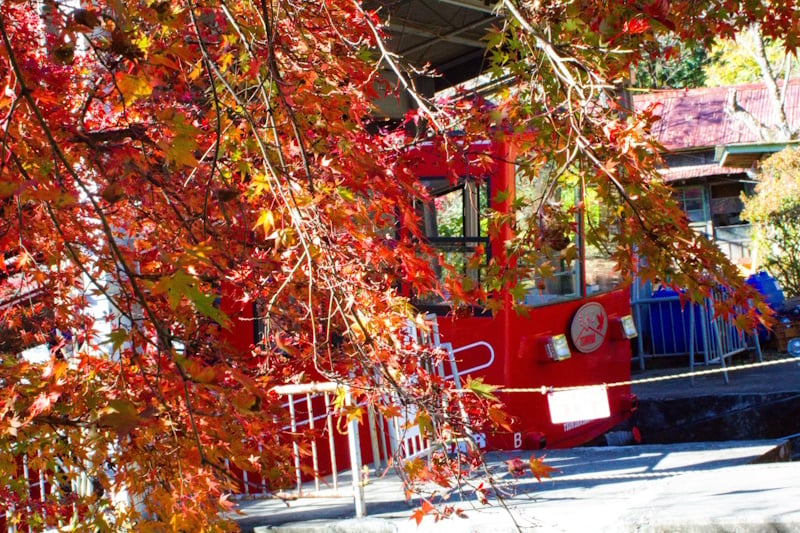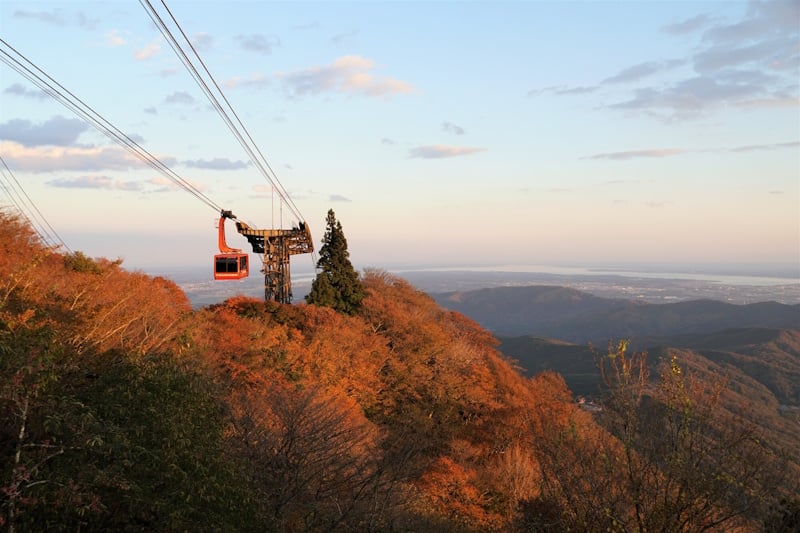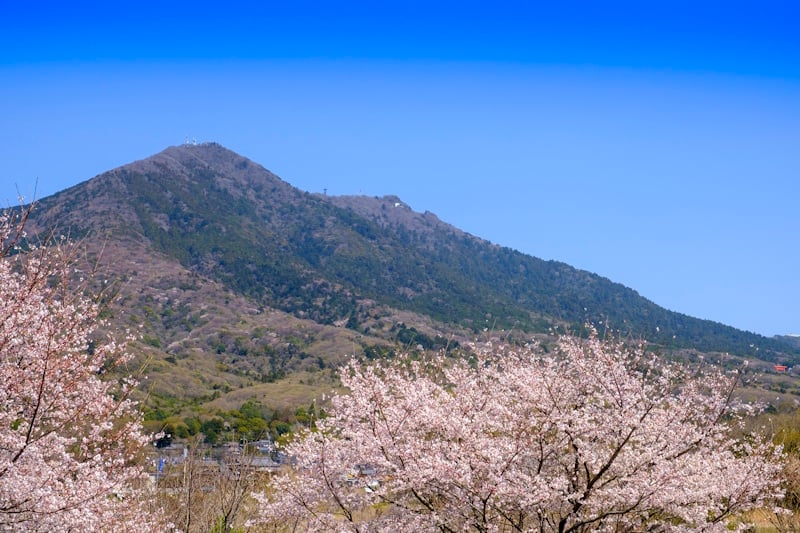The Mount Tsukuba Cable Car is preparing a fresh initiative to accommodate greater visitor numbers while preserving the natural environment of Mount Tsukuba. It marked its 100th anniversary in October 2025 with plans to meet the growing wave of domestic tourism and outdoor recreation in Japan.
Stretching up the slopes of Mount Tsukuba in Ibaraki Prefecture, the Mount Tsukuba Cable Car has long been a beloved access route for hikers, sightseers, and seasonal tourists alike. The line offers panoramic views over the Kanto plain.
The ride up Mount Tsukuba
 Picture: おひさま / PIXTA(ピクスタ)
Picture: おひさま / PIXTA(ピクスタ)
The cable car moves gently through the thick green forest, climbing at about 13 kilometers per hour or 3.6 meters per second. It can take 642 people up and down the mountain per hour.
When it passes the descending car at the midpoint exchange area, passengers eagerly lift their smartphones to capture the moment. The trip from the mid-slope Miyawaki Station to the summit’s Tsukubasancho Station takes roughly eight minutes.
Throughout the year, passengers can enjoy colorful scenery from the cable car windows. In spring, plum blossoms, cherry trees, katakuri lilies, anemones, and azaleas bloom across the slopes. Early summer brings hydrangeas, autumn fills the mountain with red and gold leaves, and winter blankets it in snow.
Above 500 meters in elevation, ancient cedar trees, some more than 500 years old, stand tall along the route. Massive granite boulders, formed from the mountain’s distinctive hornblende rock, emerge between the trees and offer striking views of Mount Tsukuba’s rugged landscape.
Around the lower Miyawaki Station, visitors can see bright yellow adonis flowers in February and March and brilliant maple leaves in November. During these seasons, many travelers come to take photographs, making the area a popular scenic spot. The views from the summit are equally spectacular. From the top, riders can see the cityscape of Tsukuba below, the Tokyo Skytree, Tokyo’s skyscrapers, Mount Fuji, and the distant ranges of Nikko and Nasu.
Looking back from the cabin, the tracks stretch toward the horizon through gaps in the forest, offering a different kind of beauty than the summit view. When passengers gaze forward, the steep track appears like a bridge connecting the earth and the sky.
The history of the beloved Mount Tsukuba cable car
 Picture: kazo / PIXTA(ピクスタ)
Picture: kazo / PIXTA(ピクスタ)
The Mount Tsukuba Cable Car, Japan’s fifth-oldest cable line, continues to serve as a beloved gateway to Ibaraki’s iconic Mount Tsukuba. It remains a vital part of the mountain’s tourism network alongside the Mount Tsukuba Ropeway, which recently celebrated its 60th anniversary
The line began operation in 1925 (Taisho 14). In the Kanto region, it is the second-oldest cable car after the Hakone Cable Car, which opened in December 1921. About one-third of the track curves along the slope, which is its most distinctive feature.
Engineers designed the route this way to protect the mountain’s natural environment. The Japan Society of Civil Engineers gave an honorable mention to the Mount Tsukuba Cable Car in 2015, recognizing it as a “transportation facility of great historical significance.” The group praised its construction for using the most advanced technology of the Taisho era.
Planning a trip to Japan? Get an authentic, interpreted experience from Unseen Japan Tours and see a side of the country others miss!

“Noah [at Unseen Japan] put together an itinerary that didn’t lock us in and we could travel at our own pace. In Tokyo, he guided us personally on a walking tour. Overall, he made our Japan trip an experience not to forget.” – Kate and Simon S., Australia

See a side of Tokyo that other tourists can’t. Book a tour with Unseen Japan Tours – we’ll tailor your trip to your interests and guide you through experiences usually closed off to non-Japanese speakers.


Want more news and views from Japan? Donate $5/month ($60 one-time donation) to the Unseen Japan Journalism Fund to join Unseen Japan Insider. You’ll get our Insider newsletter with more news and deep dives, a chance to get your burning Japan questions answered, and a voice in our future editorial direction.
In February 1944 (Showa 19), operations were temporarily suspended after it was deemed a “nonessential line” during wartime. According to Tsukuba Kanko Tetsudo, the cable car’s operator, the line reopened ten years later, in 1954. Local residents had strongly urged the company to restart service after the wartime closure. Their calls for revival finally led to the relaunch.
In 1985, the cable car carried Emperor Showa during his visit to the Tsukuba Expo. It operated as a special “Imperial Train” for the International Science and Technology Exposition that year.
In recent years, the number of inbound tourists has grown, but on weekdays, the cars rarely fill to capacity like they used to before.
Still, residents’ affection for the cable car has not faded with time. Near the summit station, 81-year-old Kinuko Nakayama has operated Naka no Chaya, a rest stop and souvenir shop, for nearly 70 years. “I ride it every day to carry supplies,” she shared with Tokyo Shimbun. “It’s my essential means of getting around.”
She spoke warmly of the long-standing bond with her customers. “Many still stop by to say hello when they visit,” she said. “Some even tell their friends about my shop. After all these years, those good relationships remain.”
Mount Tsukuba Cable Car celebrated 100 Years with extended hours and commemorative tickets
Tsukuba Kanko Tetsudo celebrated the 100th anniversary of the Mount Tsukuba Cable Car on October 12th. To mark the event, it extended operations until 8:00 p.m. from the 11th to the 13th. The extension allowed visitors to enjoy night views from the summit.
From the top, passengers could see the lights of central Tokyo across the Kanto Plain. The view has also been recognized as a “Japan Nightscape Heritage” site. Usually, the cable car ends service at 5:00 p.m., but for these three days, it continued running after sunset.
The company also released a limited edition of 200 commemorative tickets and displayed a special headmark on the front of the cable car, featuring Mount Tsukuba’s silhouette and other designs.
Autumn in motion: a cable car journey into the fall foliage
 Picture: 蕎麦喰亭 / PIXTA(ピクスタ)
Picture: 蕎麦喰亭 / PIXTA(ピクスタ)
Although the 100th anniversary campaign only lasted three days, the annual Mount Tsukuba Momiji Festival is currently underway and will continue until December 1.
For visitors seeking an effortless way to experience the mountain’s autumn beauty, the cable car offers an ideal option. The area surrounding Miyawaki Station, the line’s departure point, is among Mount Tsukuba’s most renowned viewing spots. The slopes glow with vivid red maple leaves, forming a sweeping tapestry of color. The eight-minute ascent to the summit reveals a dynamic panorama of seasonal hues. From the observatory at the top, visitors can look down on a sea of crimson and gold stretching across the lower slopes.
Planning a trip to Japan? Get an authentic, interpreted experience from Unseen Japan Tours and see a side of the country others miss!

“Noah [at Unseen Japan] put together an itinerary that didn’t lock us in and we could travel at our own pace. In Tokyo, he guided us personally on a walking tour. Overall, he made our Japan trip an experience not to forget.” – Kate and Simon S., Australia

See a side of Tokyo that other tourists can’t. Book a tour with Unseen Japan Tours – we’ll tailor your trip to your interests and guide you through experiences usually closed off to non-Japanese speakers.


Want more news and views from Japan? Donate $5/month ($60 one-time donation) to the Unseen Japan Journalism Fund to join Unseen Japan Insider. You’ll get our Insider newsletter with more news and deep dives, a chance to get your burning Japan questions answered, and a voice in our future editorial direction.
Autumn colors first appear at the summit before gradually descending toward the base. The Tsukuba Tourism and Convention Association provides real-time updates on the best viewing stages. Last year, in 2024, the summit’s foliage was at its peak around mid-November, while the mid and lower slopes were just beginning to change.
Sources
のんびり登坂 ケーブルカー 筑波山頂目指して100年 インバウンド客増加で再注目 東京新聞
空白10年乗り越えきょうも山頂へ 筑波山ケーブルカー開業100年 朝日新聞
筑波山ケーブルカー&ロープウェイ
ケーブルカーで紅葉狩り 見頃は11月中旬~12月初旬 筑波山(茨城・つくば市) よみうりタウンニュース


AloJapan.com